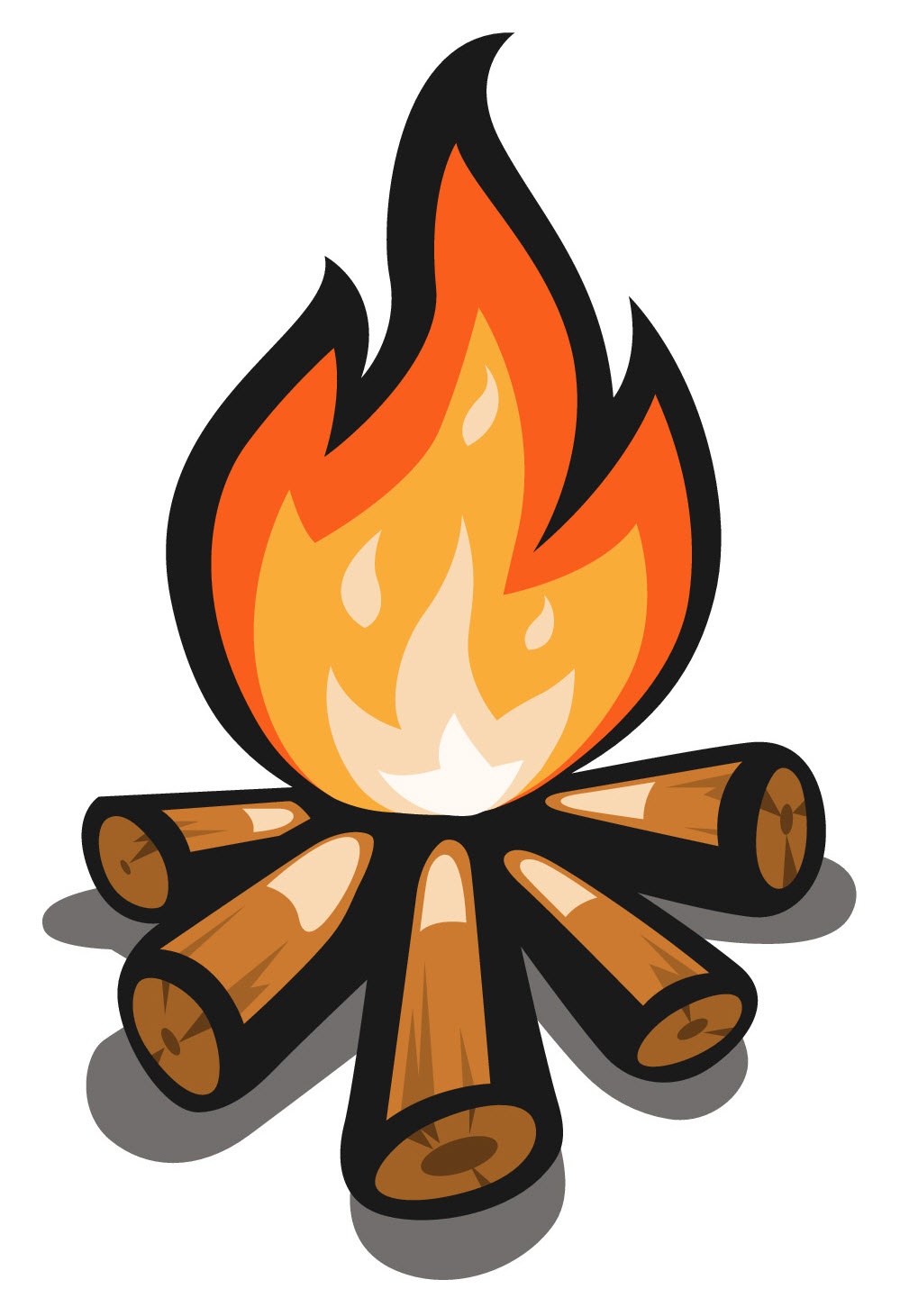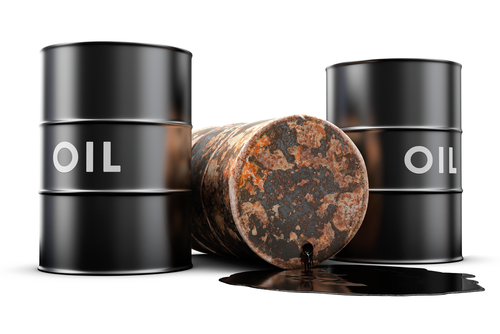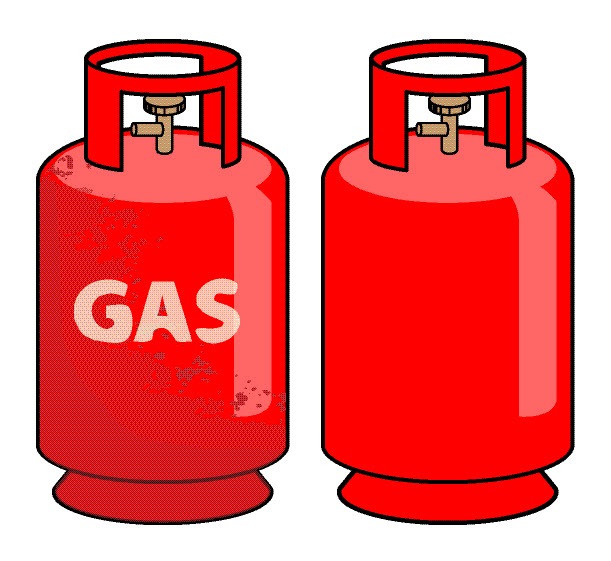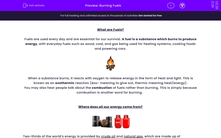What are Fuels?
Fuels are used every day and are essential for our survival.
A fuel is a substance that burns to produce energy, with everyday fuels such as wood, coal, and gas being used for heating systems, cooking foods and powering cars.

When a substance burns, it reacts with oxygen to release energy in the form of heat and light. This is known as an exothermic reaction (exo- meaning to give out, thermic meaning heat/energy).
You may also hear people talk about the combustion of fuels rather than burning. This is simply because combustion is another word for burning.
Where does all our energy come from?
 |
 |
Two-thirds of the world’s energy is provided by crude oil and natural gas, which are made up of compounds called hydrocarbons. As the name suggests, hydrocarbons are simply made up of two elements: hydrogen and carbon.
All hydrocarbons burn in a plentiful supply of air to produce carbon dioxide and water:
Word equation: methane + oxygen ![]() water + carbon dioxide
water + carbon dioxide
Chemical equation: CH4 + 2O2 ![]() 2H2O + CO2
2H2O + CO2
This is known as complete combustion.
The Problem with Burning Hydrocarbons
One big problem with burning hydrocarbons is incomplete combustion. This occurs when there is not enough oxygen and can cause poisonous carbon monoxide and soot (carbon) to be formed. Water is still formed in the reaction, and some energy, although less energy than in complete combustion. The carbon monoxide produced when inhaled can replace the oxygen in our red blood cells, leading to unconsciousness or death. The soot which is released into the air can cause breathing difficulties as well as cause buildings to blacken.
Another big problem is pollution, as the burning of hydrocarbons produces the greenhouse gas, carbon dioxide.
Because of these problems, and the fact that fossil fuels are finite and therefore running out, many alternative energy sources are being used, such as hydrogen, solar power, wind, hydroelectric etc.
Think about this question before you start the activity:
Can you think of an advantage and a disadvantage for each alternative energy source?








